The Enchanting World of Keeshond Dogs
Introduction and Breed Background
 Welcome to the delightful world of Keeshond dogs! With their plush double coats, curled tails, and endearing spectacles, these furry wonders are sure to steal your heart. But before we dive into the magical realm of Keeshonds, let's take a moment to understand what makes them such a fantastic choice for prospective dog owners.
Welcome to the delightful world of Keeshond dogs! With their plush double coats, curled tails, and endearing spectacles, these furry wonders are sure to steal your heart. But before we dive into the magical realm of Keeshonds, let's take a moment to understand what makes them such a fantastic choice for prospective dog owners.
Keeshond dogs are renowned for their unwavering loyalty, boundless energy, and affectionate nature. If you're seeking a loving companion that can fill your days with joy and laughter, the Keeshond might just be your perfect match. Before making a decision, it's essential to consider a few key factors.
Considerations to Understand Before Choosing this Breed
Lifestyle Compatibility: Keeshonds thrive in homes with active individuals or families who can keep up with their playfulness and exercise needs. They love joining their human companions on outdoor adventures and will happily accompany you on hikes or runs.
Grooming Commitment: With their thick, double coats, Keeshonds require regular grooming to keep their fur in top condition and prevent matting. Be prepared to brush them several times a week, especially during shedding seasons.
Socialization and Training: Keeshonds are social butterflies and enjoy interacting with people and other pets. Early socialization and training are essential to ensure they grow into well-mannered and confident dogs.
Time and Attention: These affectionate pups crave attention and love spending time with their human families. If you lead a busy lifestyle that keeps you away from home for long hours, consider enlisting the help of a dog walker or a pet sitter.
 Interesting Facts and Fun Tidbits
Interesting Facts and Fun Tidbits
Keeshonds are often affectionately called "Velcro dogs" because of their tendency to stick close to their human companions.
During the French Revolution, the Keeshond became a symbol of Dutch resistance, as they were often seen alongside patriots and political gatherings. The "spectacles" around their eyes not only add to their charm but also protect them from harsh weather conditions on the Dutch canals.
Breed Background and History
The origins of the Keeshond breed can be traced back to the Netherlands, where they were beloved companions to Dutch families and barge operators in the 18th century. These charismatic dogs earned their place on barges not only for their excellent watchdog abilities but also for their heartwarming companionship.
As political tensions rose in the late 1700s, the Keeshond became a symbol of Dutch patriotism. They were often depicted in political cartoons and even featured in poems, showcasing their esteemed status among the Dutch people.
Purpose and Original Use of the Breed
Keeshonds served as versatile working-class dogs, fulfilling several roles on barges. They were exceptional watchdogs, alerting their human companions to any potential dangers along the waterways. Moreover, their cheerful personalities and love for play made them beloved companions to the entire family.
Recognition by Kennel Clubs
 The charming Keeshond has captured the hearts of dog lovers worldwide. Various kennel clubs, including the American Kennel Club (AKC) and the Fédération Cynologique Internationale (FCI), have recognized the breed and placed them in the Non-Sporting group. These prestigious recognitions pay homage to the Keeshond's exceptional qualities and captivating presence.
The charming Keeshond has captured the hearts of dog lovers worldwide. Various kennel clubs, including the American Kennel Club (AKC) and the Fédération Cynologique Internationale (FCI), have recognized the breed and placed them in the Non-Sporting group. These prestigious recognitions pay homage to the Keeshond's exceptional qualities and captivating presence.
Appearance
With their medium build and well-proportioned bodies, Keeshonds exude grace and elegance. Their lush double coats, consisting of a soft undercoat and long, flowing guard hairs, create a majestic appearance that demands attention. Their fur colors range from dazzling shades of gray to rich blacks and luscious creams, accentuating their beauty.
Distinctive Features and Markings
The Keeshond's enchanting appearance is further enhanced by their striking spectacles—distinctive markings around their eyes that resemble eyeglasses. This endearing feature adds to their intelligent and engaging expressions, melting the hearts of everyone they meet.
Average Litter Size
Welcoming a litter of Keeshond puppies into the world is a delightful experience. On average, a healthy Keeshond litter consists of 4 to 7 adorable pups, each embodying the breed's captivating charm. Puppy lovers will find it hard to resist the allure of these cuddly little bundles of joy!
Temperament and Personality
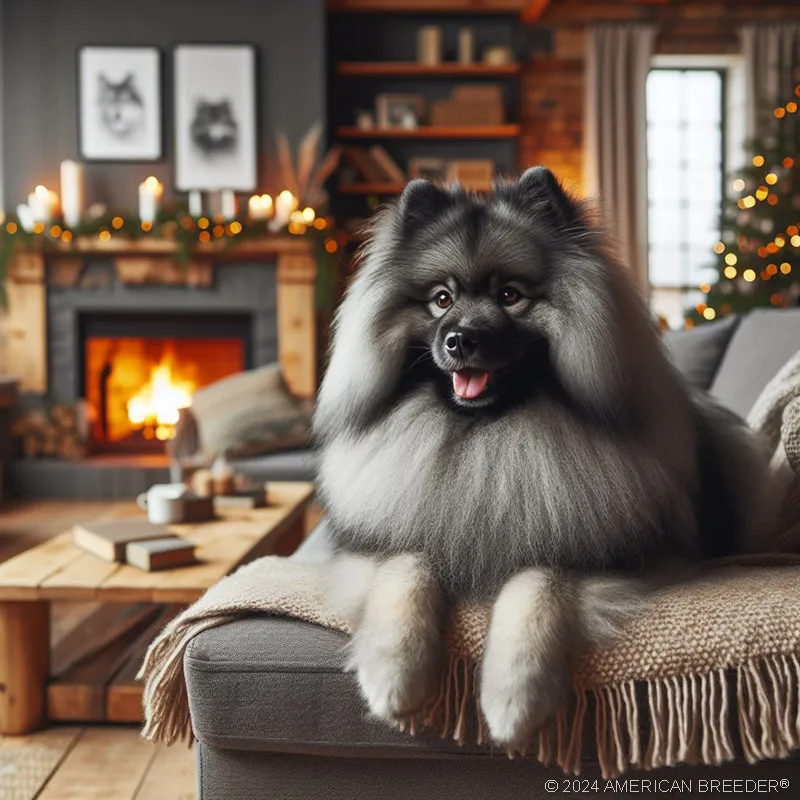 The Keeshond's delightful temperament is a defining trait that endears them to all who encounter them. Their friendly and affectionate nature makes them excellent family pets, excelling as playmates for children and warm companions for adults.
The Keeshond's delightful temperament is a defining trait that endears them to all who encounter them. Their friendly and affectionate nature makes them excellent family pets, excelling as playmates for children and warm companions for adults.
Energy Levels and Activity Requirements
Keeshonds are like little balls of energy, always ready for playtime and adventures. They thoroughly enjoy being involved in various activities with their human families and thrive on mental and physical stimulation. Engaging them in interactive games, puzzle toys, and regular outdoor excursions keeps their minds sharp and their spirits high.
Compatibility with Different Lifestyles and Family Dynamics
The adaptable nature of Keeshonds makes them a wonderful addition to various households. Whether you're a single individual, part of a bustling family, or even have other pets, Keeshonds will quickly find their place and melt seamlessly into the family dynamic.
Behavioral Issues and Common Challenges
While Keeshonds are generally well-mannered and friendly, like any breed, they may face certain behavioral challenges. Common issues to watch out for include excessive barking, resource guarding, and separation anxiety. Early training, positive reinforcement, and patience are key to addressing these challenges successfully.
Trainability and Intelligence
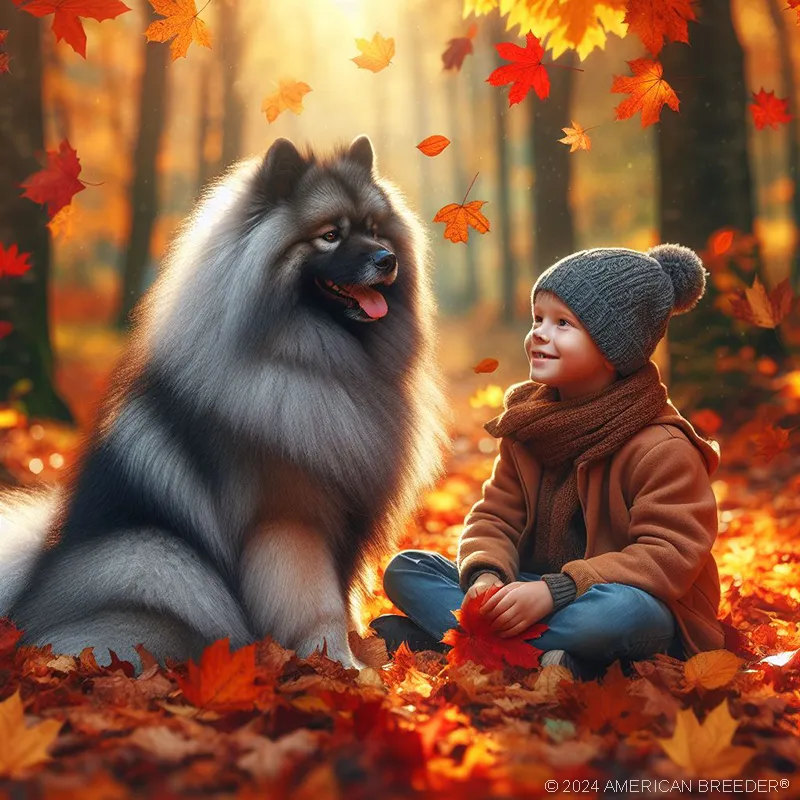 Keeshonds are highly intelligent and quick learners, making training an enjoyable and rewarding experience for both you and your canine companion.
Keeshonds are highly intelligent and quick learners, making training an enjoyable and rewarding experience for both you and your canine companion.
Willingness to Please Their Owner
These eager-to-please dogs thrive on positive reinforcement and praise during training sessions. Their desire to make their human companions happy motivates them to excel in various commands and tricks.
Recommended Training Approaches and Techniques
Reward-based training methods work best with Keeshonds, as they respond well to positive reinforcement. Using treats, praise, and play as rewards helps keep them engaged and excited to learn.
Specialized Training and Activities
Keeshonds' intelligence and agility make them ideal candidates for various activities and competitions. They shine in obedience trials, agility competitions, and even as therapy dogs, bringing joy to those in need.
Health and Care
 Common Health Issues and Predispositions
Common Health Issues and Predispositions
Like all breeds, Keeshonds may be prone to certain health issues. Common conditions include hip dysplasia and patellar luxation. Regular visits to the veterinarian and maintaining a healthy lifestyle can help prevent or manage these concerns.
Nutrition and Feeding Guidelines
A balanced diet is essential for Keeshond dogs to thrive. Providing high-quality dog food that meets their nutritional needs supports their overall well-being and keeps their coat shiny and healthy.
Exercise Needs and Recommendations
Keeshonds' energetic nature demands regular exercise to keep them happy and healthy. Engaging them in daily walks, playtime, and interactive games ensures they burn off energy and remain mentally stimulated.
Grooming Requirements
Keeshonds' double coats require regular grooming to prevent matting and maintain their natural beauty. Brushing their fur several times a week helps remove loose hairs and keeps their coat in pristine condition. During shedding seasons, which typically occur twice a year, more frequent brushing may be necessary to manage the increased hair loss.
Bathing Keeshonds should be done as needed, usually every few months, to keep them clean and fresh. Be sure to use a dog-specific shampoo to maintain the natural oils in their coat.
In addition to regular grooming, it's essential to pay attention to their dental health. Daily tooth brushing or providing dental chews can help prevent dental issues and keep their pearly whites shining bright.
Socialization and Compatibility
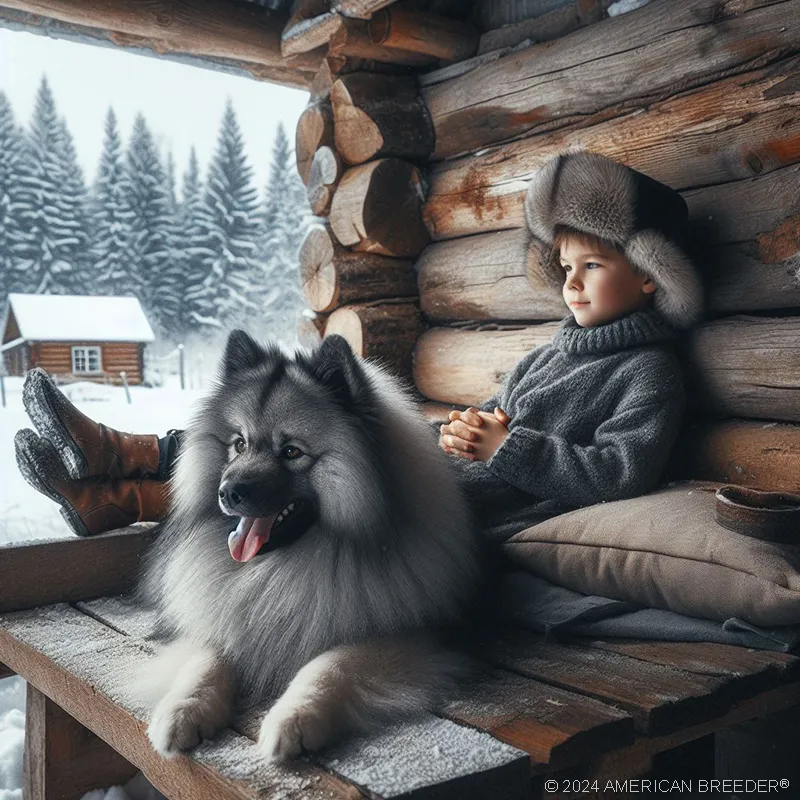 Keeshonds are the life of the party when it comes to socialization! They adore interacting with children, making them wonderful playmates for kids. Their friendly and outgoing nature also extends to other pets, making them great companions for multi-pet households.
Keeshonds are the life of the party when it comes to socialization! They adore interacting with children, making them wonderful playmates for kids. Their friendly and outgoing nature also extends to other pets, making them great companions for multi-pet households.
Early socialization is crucial for Keeshond puppies to grow into well-adjusted and confident adults. Exposing them to various environments, people, and animals from a young age helps them develop positive social behaviors and reduces the risk of fear or aggression later in life.
Precautions and Considerations for Multi-Dog Households
While Keeshonds generally get along well with other dogs, proper introductions and supervised interactions are essential, especially when bringing a new dog into the household. Ensuring that all dogs have their space and personal boundaries is crucial to maintaining harmony in a multi-dog environment.
Living Arrangements and Environment
Keeshonds are versatile when it comes to living arrangements. They adapt well to apartment living, provided they receive enough daily exercise and mental stimulation. However, having access to a medium to large yard offers these energetic pups a chance to burn off their exuberant energy and explore the great outdoors.
Climate-wise, Keeshonds tolerate various weather conditions, but they do best in temperate climates. Extreme heat or cold may be challenging for them, so providing adequate shelter and regulating their outdoor time during extreme weather is crucial.
Overall Summary
In summary, Keeshond dogs are charismatic and affectionate companions that bring boundless joy to their families. From their fascinating history as symbols of Dutch patriotism to their friendly and playful nature, Keeshonds captivate the hearts of all who encounter them.
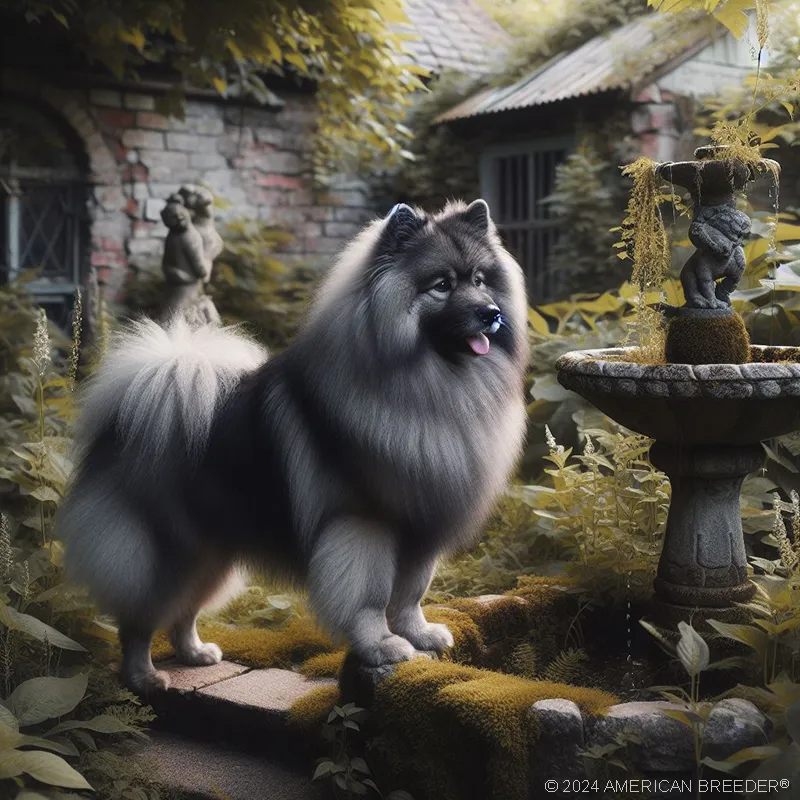 Affectionate and Friendly: Keeshonds thrive on the love and attention of their human families and get along wonderfully with children and other pets.
Affectionate and Friendly: Keeshonds thrive on the love and attention of their human families and get along wonderfully with children and other pets.
Versatile Living Arrangements: Whether in an apartment or a house with a yard, Keeshonds adapt well to various living environments.
Intelligent and Trainable: Their intelligence and willingness to learn make Keeshonds a joy to train, excelling in various commands and activities.
Loving Companions: Keeshonds' affectionate and loyal nature makes them cherished members of any household, bringing joy and laughter to their owners' lives.
Health and Well-Being: Regular veterinary care, a balanced diet, and proper grooming ensure a long and happy life for your Keeshond.
Social Butterflies: Keeshonds are social creatures that love spending time with their human families and interacting with other pets.
Responsible Ownership: Whether adopting from a shelter or choosing a reputable breeder, responsible ownership is crucial for the well-being of these delightful dogs.
Explore and Experience: As you venture into the enchanting world of Keeshond ownership, embrace the love, loyalty, and charm these dogs bring to your life. Emphasize positive training, nurture their sociable nature, and cherish every moment with your devoted Keeshond companion. Your journey with these captivating canine companions is bound to be an unforgettable and heartwarming experience.
Keeshond Dog Quick Reference Guide
Breed Background: Origin: Netherlands | Breed Purpose: Barge dog, watchdog | AKC Class: Non-Sporting | Year Recognized by AKC: 1930
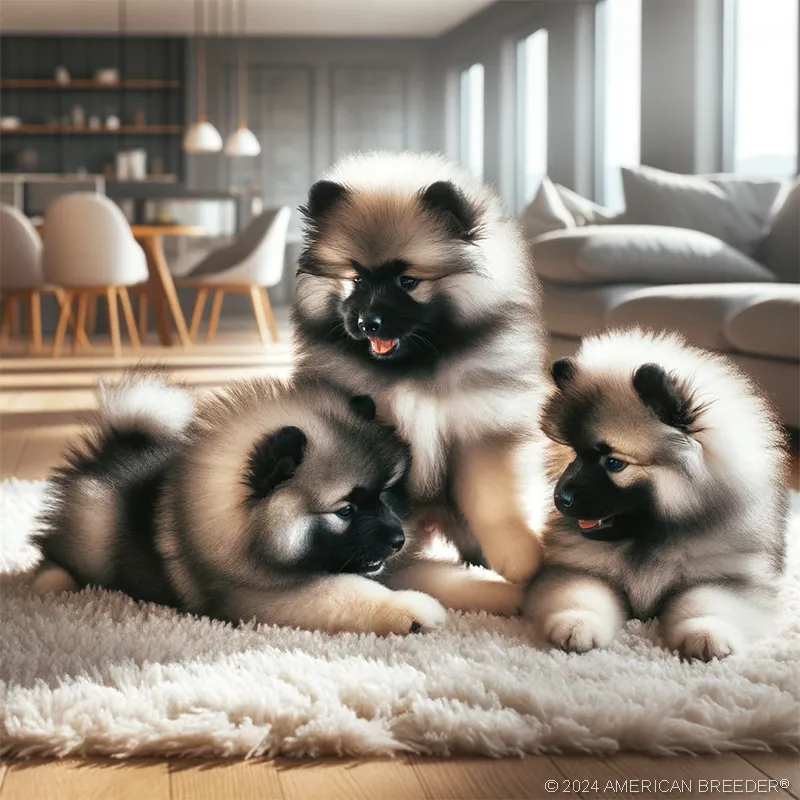 Appearance: Size: Medium | Weight: 35-45 pounds | Coat Type: Double coat, plush | Colors & Patterns: Gray, black, cream | Distinctive Features: Spectacles around eyes, curled tail
Appearance: Size: Medium | Weight: 35-45 pounds | Coat Type: Double coat, plush | Colors & Patterns: Gray, black, cream | Distinctive Features: Spectacles around eyes, curled tail
Temperament: Energy Level: 4 | Friendliness to Pets: 4 | Friendliness to Strangers: 4 | Trainability: 3 | Playfulness: 4 | Frequent Barker: 2 | Chase Instincts: 3 | Sense of Smell: 3 | Drive to Hunt: 2
Health & Care: Health Issues: Hip dysplasia, patellar luxation | Lifespan: 12-15 years | Grooming Difficulty: Moderate | Exercise Needs: Moderate
Socialization: Interaction with Children: Good, playful | Interaction with Pets: Generally good | Interaction with Strangers: Friendly but alert | Ease of Training: Moderate
Suitable Living Arrangements: Apartment: Yes | House: Yes | Rural Area: Yes | Yard Size Requirements: Medium to large yard
Training & Obedience: Trainability: 3 | Intelligence: 4 | Obedience: 4 | Problem-Solving: 3 | Easily Stimulated: 3 | Focus Level: 3 | Easily Distracted: 2
Financial Planning: Typical Price Range: $1,000 - $2,500 | Initial Expenses: Moderate (vaccinations, spaying/neutering) | Ongoing Annual Expenses: Moderate (food, vet visits)
Breeding: Reproductive Maturity: 6-12 months | Litter Frequency: Once a year | Litter Size: 4-7 puppies | Stud Cost: $800 - $1,500 | Breeding Challenges: Careful selection of mates to avoid genetic issues.
Did You Enjoy this Article? Share it and Help Us Spread the Word!
If you found this article helpful, we'd appreciate it if you could share it with your friends or link to it from your website, blog, or group! You can also use the convenient social share tabs on the left side of the screen to instantly share this page to your social media feed. For more ways to support and promote the American Breeder Community, visit our Share & Promote Together page for social media posts and memes you can copy and share. Your support means the world to us!
Disclaimer: The information provided in this article is for general informational purposes only and does not constitute legal, medical, financial, or professional advice. While we strive for accuracy, we make no representations or warranties regarding the completeness, accuracy, reliability, or suitability of the information. Please consult with a professional before making decisions based on the content provided. American Breeder Inc. assumes no responsibility for any errors or omissions or for the results obtained from the use of this information.
